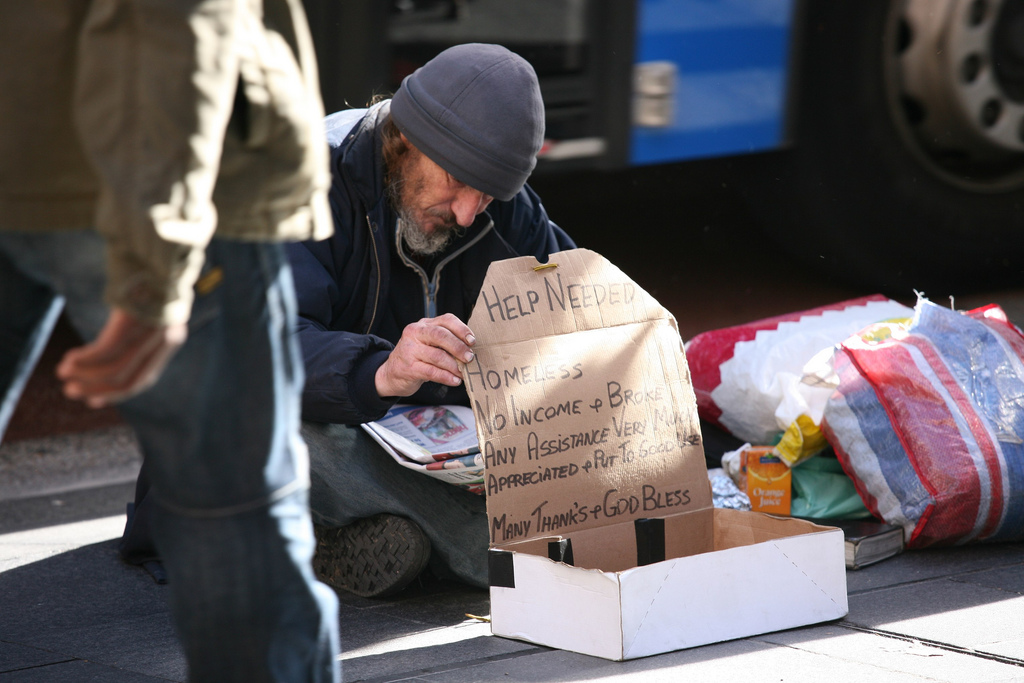Rudolf Virchow was an esteemed pathologist known best to medical students for his eponymous triad of factors predisposing patients to thrombus formation. What I didn’t realise until recently was that he was also an impassioned advocate for social and political reform and the advancement of public health, famously asserting that ‘physicians are the natural attorneys of the poor’. I discovered this aspect of Virchow’s outlook during my Social Justice Project. [1] Through involvement with various homelessness services in my area, this project challenged me to consider the specific health needs and service utilisation patterns of the homeless population in Australia, and to examine ways that service provision can better target homeless persons in order to improve their health outcomes.
In Australia on any given night, 1 in 200 people are homeless. 25% of these people are Aboriginal and Torres Strait Islanders, 30% are born overseas, and 27% are aged 18 years or less. [2] The Australian Bureau of Statistics describes a person as homeless if their place of dwelling is inadequate, has no tenure or a short tenure, or does not allow them to have control of and access to a space for social relations. [3] This includes people who stay in boarding houses, those who ‘sleep rough’, and those in supported accommodation for the homeless.
Australia’s political response to the significant healthcare needs of the homeless population has been slow. Australia’s Health 2012 noted the lack of comprehensive national data collection for this population group; the few sources that do exist emphasise the tendency towards the complex health needs of this population. [4] I was surprised to find that the previous publication, Australia’s Health 2010, had no data on the homeless population in Australia, despite the significant health concerns of this population group. [5]
Being at university in Darlinghurst, Sydney, homelessness is something I see most mornings, yet it is only recently that I have begun to understand the grave disconnect between this population group and our health services. A study conducted through St. Vincent’s Hospital, Sydney on homelessness in the area found that homeless patients at St. Vincent’s utilised four times the number of acute ward beds compared to the state average. [6] Furthermore, the homeless population experience a high prevalence of substance use disorders, and a disproportionate rate of mental illness exists among people who are either marginally housed or homeless. [4] In light of this, the study showed that there was high usage of mental health and drug and alcohol services by homeless people, and follow-up with these services continued post-discharge. [6]
The homeless population also experience a high burden of physical health comorbidites, and disease is more likely to be detected at a more advanced stage than in the general population. Homelessness is associated with a ‘risk of chronic disease of increased severity and complexity than the general population, as well as infectious diseases associated with poor living conditions.’ [4] Importantly, relatively low rates of linkage with GPs and ambulatory care services exist in this population group. [6]
So what can be done to increase health service access and utilisation in this population group? Australia-wide many organisations are already creating viable and sustainable solutions. One commendable example is ‘StreetHealth’, a mobile after-hours primary healthcare service currently implemented in Victoria. [7] Another model of integrated healthcare management that has generated interest is the provision of health services offered in conjunction with supported housing programs. These innovative healthcare models demonstrate the way in which committed and passionate healthcare professionals can create a just society by advocating for, and facilitating, access to healthcare for members of underserved populations.
I hope that Australia’s medical practitioner and student organisations can work together to increase awareness of the complex healthcare needs of Australia’s homeless population at a political level, and support the adoption of strategies similar to ‘StreetHealth’ nationwide.
1. The Social Justice Project is a part of the University of Notre Dame Australia, Sydney School of Medicine’s course. It consists of one week of voluntary assistance to an elected organisation. The aim is to identify an area of need in the community, and to address that need. It fosters a commitment to advocate for members of underserved populations and facilitate access to health services for these population groups.
2. Homelessness Australia. Homelessness statistics [cited 2013 April 30] Available at: http://www.homelessnessaustralia.org.au/index.php/about-homelessness/homeless-statistics
3. Australian Bureau of Statistics. Information Paper – A Statistical Definition of Homelessness, 2012 [cited 2013 April 30] available at: http://www.abs.gov.au/ausstats/abs@.nsf/Latestproducts/4922.0Main%20Features22012?opendocument&tabname=Summary&prodno=4922.0&issue=2012&num=&view=
4. Australian Institute of Health and Welfare. Australia’s Health 2012 [cited 2013 April 30] available at: http://www.aihw.gov.au/publication-detail/?id=10737422172
5. Australian Institute of Health and Welfare. Australia’s Health 2010 [cited 2013 April 30] available at: http://www.aihw.gov.au/publication-detail/?id=6442468376
6. Chin, C.N., Sullivan, K. and Wilson, S.F. A ‘snap-shot’ of the health of homeless people in inner Sydney: St. Vincent’s Hospital. Australian Health Review, 2011 (35): 52-56.
7. Hookey, S.J. StreetHealth: Improving Access to Primary Care. Australian Family Physician, 2012 (41): 67-69.

